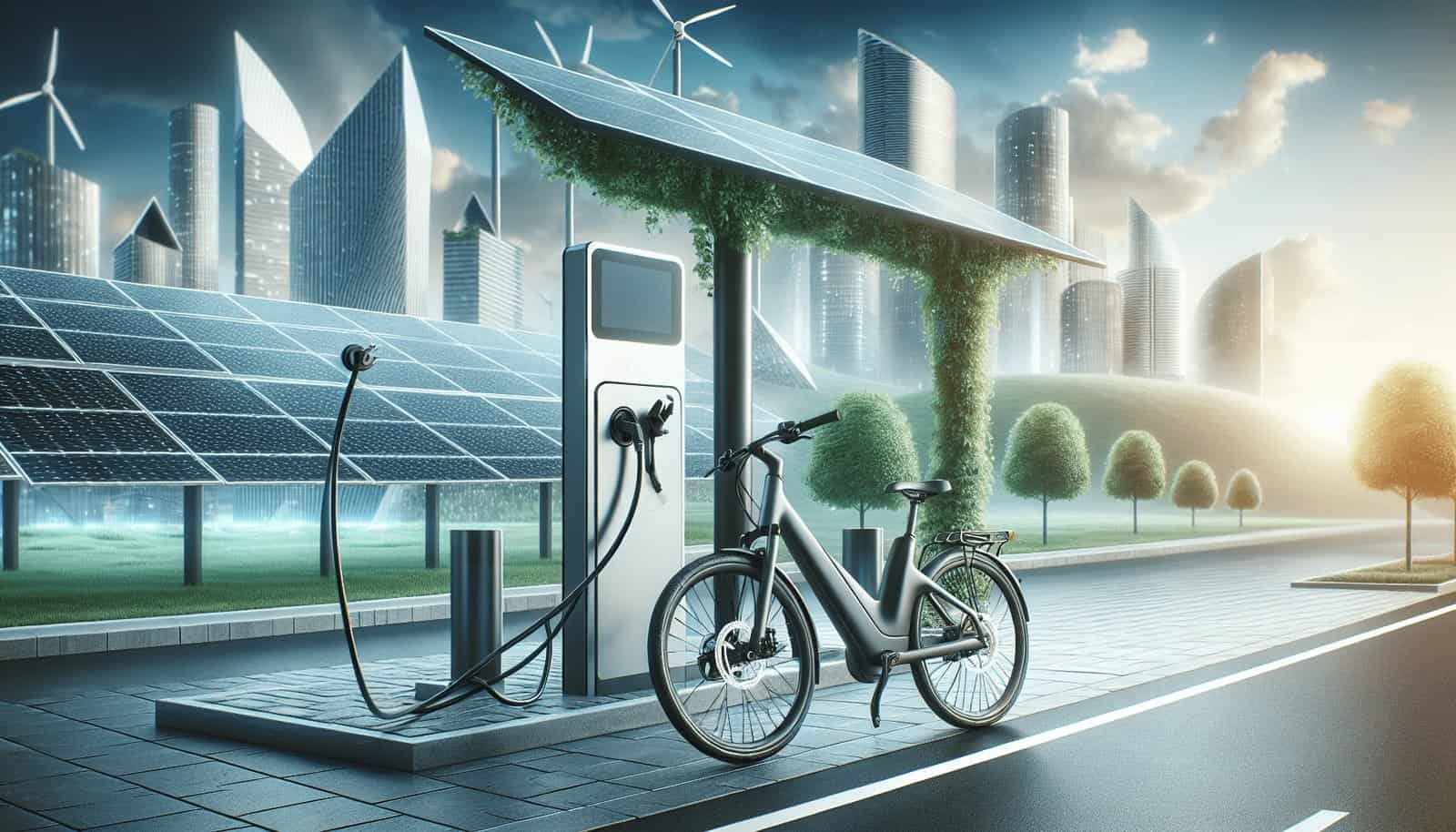Have you ever wondered if there are specific guidelines for charging an electric bike in public spaces? With the increasing adoption of electric bikes as a convenient, eco-friendly mode of transportation, understanding how to charge them in public becomes essential. Not only does this help ensure a smooth ride, but it also respects the spaces we all share.
Charging an electric bike in public entails various considerations, including safety protocols, etiquette, and regulations that vary depending on where you live. By having a grasp of these guidelines, you can help maintain the integrity of your surroundings and enjoy uninterrupted rides. Let’s take a friendly journey through these essential tips and guidelines!

Understanding the Basics of Electric Bike Charging
Before jumping into specific guidelines, it is valuable to comprehend the basics of charging an electric bike. This understanding lays the foundation for advanced discussions about public charging procedures and etiquette.
How Do Electric Bikes Work?
Electric bikes, or e-bikes, are bicycles equipped with an integrated electric motor that assists in propulsion. They offer a combination of human and electric power, making cycling easier, especially over long distances or on challenging terrains.
The Anatomy of an Electric Bike Battery
The heart of an e-bike’s power system is its battery. Typically lithium-ion, these batteries vary in capacity, often rated in watt-hours (Wh), affecting the range and performance of the bike. Understanding this component helps in managing your bike’s charging needs.
Charging Ports and Connectors
E-bikes feature charging ports similar to those on laptops or mobile phones. Compatibility with chargers is crucial, as different bikes may have varying connectors. Always ensure that the charger matches your bike’s specifications to prevent damage.
Safety Considerations When Charging an E-Bike
Safety is paramount when charging your e-bike, especially in public spaces, where your actions can affect both you and those around you.
Use the Appropriate Charger
Using a charger not designed for your battery can lead to overcharging, overheating, or even fires. Moreover, foreign chargers might not align with local voltage levels, creating additional hazards. Stick to the manufacturer-recommended options.
Monitoring Charge Time
It’s easy to forget your bike once charging starts. However, keeping an eye on the charge time is critical. Overcharging can reduce battery life or lead to overheating. Some advanced chargers offer timers or automatic cut-offs to prevent this risk.
Inspecting the Charging Equipment
Before plugging in your charger, ensuring all equipment is in good condition is wise. Check for frayed cables, damaged plugs, or worn-out connectors, as these can cause short circuits or fires.
Etiquette and Best Practices for Public Charging
Besides technical know-how, being considerate of others while charging your e-bike in public ensures a positive experience for everyone.
Sharing Charging Points
In crowded urban spaces, shared charging stations might be limited. When using these, be considerate and unplug your bike once fully charged to allow others the opportunity.
Choosing Appropriate Locations
Always select well-ventilated, designated areas for charging. Avoid pathways, entrances, or other high-traffic zones to prevent accidents or obstructions.
Securing Your E-Bike While Charging
Leaving your bike unattended while charging could attract theft. Use a sturdy lock and place it in a visible but out-of-the-way location. If the public charging site has surveillance, it’s wise to choose those locations for added security.
Regulations and Policies
Charging guidelines aren’t just about etiquette—they often involve legal considerations, as well. Compliance with local regulations ensures not only your safety but also adherence to community standards.
Local Laws and Regulations
Depending on your country or city, different laws might regulate where and how you can charge an e-bike. Familiarizing yourself with these can help in avoiding fines or penalties.
Public Charging Station Policies
Some public spaces might have specific rules regarding e-bike charging. This can include time limits, usage fees, or device compatibility requirements. Always read posted guidelines or consult with businesses or municipalities managing these areas.
Penalties for Non-Compliance
In some areas, ignoring charging station rules might lead to penalties. These can range from fines to bans from using these facilities. Staying informed helps in steering clear of these unwanted consequences.

Environmental Considerations
While e-bikes are generally eco-friendlier than cars, it’s essential to consider how charging practices impact the environment.
Sustainable Charging Practices
Choosing green power sources where possible, or charging during off-peak hours, helps reduce the environmental impact. Small actions like these contribute to broader sustainability goals.
Proper Disposal of Old Batteries
When your battery eventually wears out, ensure it’s disposed of properly. Many manufacturers or local governments offer recycling programs, which help prevent harmful chemicals from polluting the environment.
Technology’s Future in E-Bike Charging
Innovation constantly shapes how we interact with e-bikes, including how we charge them. Staying informed helps in leveraging these advancements to your advantage.
Advancements in Fast Charging
One notable trend is the development of fast-charging solutions. These technologies aim to reduce the time needed for a full charge, ideal for commuters on tight schedules.
Wireless Charging Possibilities
Imagine just parking your e-bike on a specialized mat to charge, without cables! This future isn’t far off, with several tech firms exploring inductive charging options for e-bikes, echoing developments seen in smartphone technology.
Enhanced Battery Longevity
Research and innovation in battery technology promise longer-lasting batteries with shorter charging times, higher capacities, and better performance over time.

Community Impact and Shared Resources
Your charging habits can contribute to the broader community experience, especially when using shared resources.
Contribution to Community Initiatives
Engaging with local biking communities or initiatives can provide insights into better charging practices or future developments in facilities. Sharing experiences can lead to improved resources for all.
Encouraging Responsible Charging Habits
By practicing and advocating for responsible charging habits, you help set a standard for others, fostering a respectful and efficient use of shared spaces.
Troubleshooting Common Charging Problems
Every e-bike owner might encounter occasional charging problems. Knowing how to troubleshoot these can save you from potential inconvenience or damage.
Identifying Faulty Chargers
Symptoms of a malfunctioning charger include inconsistent charging times, overheating, or a charger that makes excessive noise. Always disconnect and inspect the charger if these issues arise, and consider consulting with a specialist.
Addressing Battery Performance Issues
If your battery isn’t holding a charge as long as expected, it might be a sign of degradation or a more technical issue. Regular maintenance checks and adhering to the manufacturer’s care instructions can mitigate many problems.
Recognizing Electrical Faults
Unusual noises, sparking, or a smell of burning during charging are all signals to stop immediately and assess the situation. Consulting with a professional is highly recommended to prevent hazards.

Choosing the Right Equipment
Beyond just the bike and its charger, other equipment can influence your charging experience.
Selecting Compatible Chargers
Always use chargers compatible with your battery model and the local power output. Manufacturers typically provide clear guidelines on suitable options.
Investment in Surge Protectors
Using surge protectors when charging, especially in public outlets, can shield your equipment from power spikes, preserving battery life and reducing risk.
Regular Maintenance and Care
Routine checks, especially after using public chargers, ensure your bike stays in optimal condition. Cleaning connectors and checking wiring are small steps that make a big difference.
By being knowledgeable and considerate, you enhance not only your riding adventure but also contribute positively to the communities you travel through. Safe travels on your e-bike journeys, and may every charge be a smooth and responsible one!

